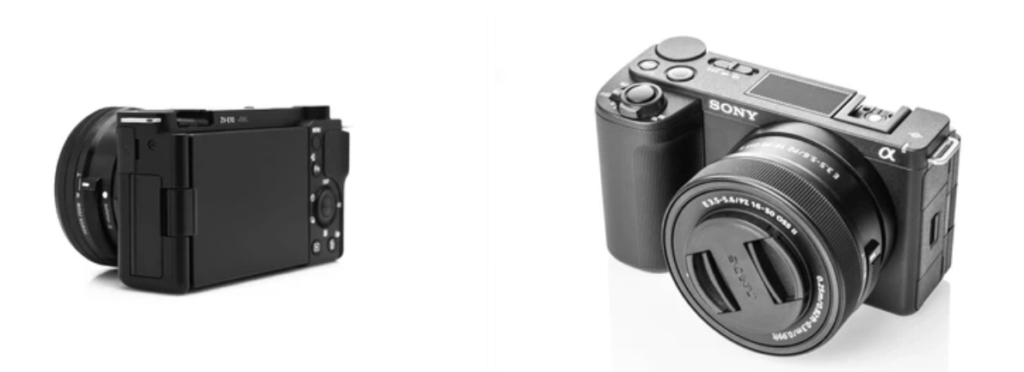Several people ask about the best mirrorless cameras for beginners in 2025. The photography market is experiencing rapid changes making mirrorless cameras the preferred equipment selection for beginner photographers. Electronics viewfinders combined with modern sensors lead mirrorless cameras to replace the slow and large mirror system thus creating compact modular instruments. This guide serves as your path to finding an excellent camera if photography stands as your new hobby.

Understanding Mirrorless Camera Technology
Camera mirrorless designs lack the internal mirror mechanism thus ensuring that light reaches the image sensor directly. The new design creation provides a smaller and lighter construction which allows them to easily move from place to place. The two alternative viewfinder options employed in mirrorless cameras are Electronic Viewfinders (EVFs) or LCD screens which show real-time previews of all exposure parameters. The technology boosts autofocus speed together with accuracy which gives mirrorless cameras great appeal for both beginners and professionals.
Best Accessories for Mirrorless Cameras
The best performance from mirrorless cameras requires the use of proper supplementary accessories.
- Electronic components in mirrorless cameras cause the cameras to require frequent battery changes. Carrying spares is a must.
- Lens adapters function as connectors that allow DSLR lenses to work with mirrorless systems which results in more available lenses.
- Proper video recording and the creation of time-lapses and long-exposure images require a strong tripod or stabilizing gimbal system.
- SD or CFexpress cards that operate at high speeds serve two functions: quick data transfer and uninterrupted 4K video recording.
- Protective gear includes both a camera bag and lens cleaning equipment which helps keep your equipment dust-free and protected against moisture exposure.
- Memory also plays an important to define the camera’s health. Although it’s external. But a few cameras cannot cop-up with the other smart memories.
Why Choose a Mirrorless Camera?
The main advantages of mirrorless cameras versus DSLRs depend on their reduced bulk and speedier autofocus functions together with their ability to perform quiet photography. All modern mirrorless cameras feature built-in image stabilization called IBIS as well as both automatic focus tracking functionality and EVF viewfinders with high-resolution capability. These cameras present two disadvantages consisting of limited battery endurance and restricted choices of native lens options.
Key Considerations When Buying a Mirrorless Camera
Before making a purchase, consider the following factors:
- Budget: Mirrorless cameras vary significantly in price. Define your budget before diving into the options.
- Battery Life: These cameras rely on electronic components, which can drain the battery faster than DSLRs. Carrying spare batteries is a must.
- Lens Compatibility: Since mirrorless cameras are relatively new, their lens ecosystems may not be as extensive as DSLR systems. Check for lens availability and adapter options.
- Viewfinder & Display: The quality of the electronic viewfinder and LCD touchscreen can greatly impact usability, especially in low-light conditions.
2. Sony ZV-E10 – Best for Video Creators

Pros:
- Designed for vloggers and content creators
- Front-facing articulating screen
- High-quality built-in microphone
- Reliable autofocus system
Cons:
- Lacks an electronic viewfinder
- Rolling shutter effect in 4K videos
- No in-body stabilization
The Sony ZV-E10 is tailored for video creators, offering features like a high-quality microphone, a vari-angle touchscreen, and creative video modes. While it lacks an EVF and relies on digital stabilization, it’s an excellent choice for those prioritizing video over photography.
3. Olympus OM-D E-M10 Mark IV – Best Budget Option
The Olympus OM-D E-M10 Mark IV offers an attractive combination of cost efficiency and solid performance for mirrorless photography. The 20MP Micro Four Thirds sensor of this camera makes it very suitable for photographers who want high-quality images.
Pros:
- Retro-styled design
- In-body image stabilization (IBIS)
- User-friendly interface
- Excellent autofocus improvements
Cons:
- No external microphone support
- The screen tilt function of LCD screens proves insufficient for vlogging purposes.

4. Nikon Z5 – Best Entry-Level Full-Frame Camera
The Nikon Z5 stands as an ideal option for people who wish to start their journey into full-frame photography. Users can achieve superb picture quality through its 24MP sensor system along with excellent capabilities under dim lighting conditions.
Pros:
- Robust, weather-sealed body
- High-resolution EVF and tilting LCD
- 5-axis in-body stabilization
Cons:
- Cropped 4K video recording
- Slightly expensive for beginners

5. Fujifilm X-T30 II – Best Lens Variety
People who seek a vintage appearance in photography with advanced creative capabilities will find their perfect match in the Fujifilm X-T30 II. The product gains recognition from enthusiasts because of its technology for advanced autofocus alongside its set of film simulation features.
Pros:
- Vintage-inspired design with manual controls
- Excellent color reproduction and film simulation modes
- Wide range of compatible Fujifilm lenses
Cons:
- 4K video is limited to 30fps
- No in-body stabilization

Honorable Mentions
In addition to our top picks, here are a few other great mirrorless cameras worth considering:
- Canon EOS R50 – Compact and beginner-friendly with 4K recording.
- Sony A6100 – Excellent image quality and autofocus system for beginners.
- Fujifilm X100VI – A stylish fixed-lens camera with a high-resolution sensor.
Final Thoughts –Mirrorless Cameras for Beginners
In conclusion, Best Mirrorless Cameras for Beginners. Choosing the best mirrorless camera depends on your specific needs. Whether you prioritize portability, video quality, or a full-frame sensor, there’s a camera out there for you. Consider testing a few models in-store or watching hands-on reviews before making your final decision. Happy shooting!
FAQs – Mirrorless Cameras for Beginners
1. Why do mirrorless cameras differ fundamentally from DSLR cameras?
A mirrorless camera lacks the reflective mirror components of DSLRs allowing it to become smaller and more portable. The cameras utilize electronic viewfinders instead of optical viewfinders providing instant exposure previews during monitoring.
2. Do mirrorless cameras work well as entry-level camera systems?
Yes! New photographers will benefit from using mirrorless cameras because of their intuitive interfaces together with their powerful autofocus system and their small size.
3. Is battery life reduced among mirrorless camera systems?
Generally, yes. Electronic components make up most mirrorless camera systems and thus consume more power than DSLR cameras due to their reliance on LCD screens and electronic viewfinders. Carrying extra batteries is recommended.
4. Is there a way for me to use DSLR lenses with a mirrorless camera?
In many cases, yes. A suitable adapter allows DSLR lens usage on mirrorless cameras yet autofocus performance might show variations.
5. Tell me about IBIS and when you should use it.
Through IBIS technology camera shake while using the camera by hand creates sharper photos and smoother video, especially under poor lighting conditions.
6. What should be the primary choice of mirrorless camera among absolute beginners?
The best entry-level photography options stem from Canon alongside Sony Nikon Fujifilm and Olympus since each brand combines affordable prices with user-friendly systems and reliable performance.


